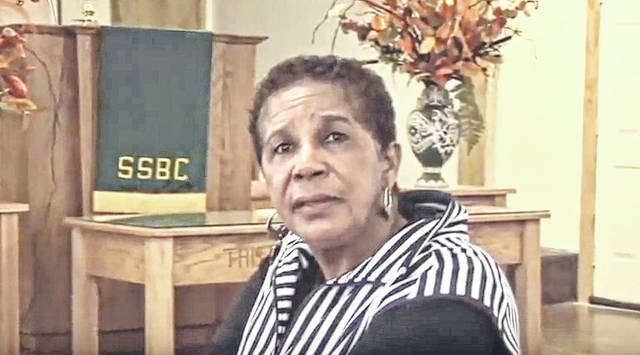PICKENS COUNTY — A group of Clemson University students and faculty tiptoed through a weed-filled plot of land in northern Pickens County as if they were trying to avoid disturbing the birds flying above them. They removed brush and debris from a cemetery some feared was forgotten.
That was more than seven years ago when members of Clemson’s anthropology club and faculty carefully cleaned and marked graves at a slave cemetery that belongs to Soapstone Baptist Church in Liberia, South Carolina.
“Hundreds of freed slaves settled in the Upstate of South Carolina after the Civil War,” said Mable Owens Clarke, Soapstone Baptist Church member and historian.
Clarke said the church dates back to about 1865 when her maternal great-grandfather founded the house of worship.
Clemson anthropology professor Mike Coggeshall read bits and pieces about the church and its cemetery while researching Upstate mountain culture. He later stumbled upon the small church high in the Blue Ridge foothills.
“That’s where I met Mable and her family,” Coggeshall said. “I learned they are among the remaining members of the small African-American community.”
For various reasons, the community was named after the African country Liberia.
Clarke said a couple of years before the students visited the community in 2011, a surveyor found graves while working on the church property. Clarke checked it out and determined it was a slave cemetery that included some of her ancestors.
Coggeshall recently released a new book, “Liberia, South Carolina: An African American Appalachian Community,” to shed light on the history of five generations of the Owens family, their friends and neighbors. All royalties for the book are returned to the community for historical preservation and presentation.
“I wanted to chronicle the struggles of Upstate blacks through slavery, Reconstruction, the Jim Crow era and the desegregation of South Carolina through the lens of this community,” Coggeshall said.
Coggeshall spent hours interviewing people in Liberia and surrounding areas, sometimes while sitting with a plate of fried fish and fixings sold by the church every third Saturday of the month to help maintain the property. His book is a dream come true for Clarke.
“Mike told me he wanted to document the history,” Clarke said.
Coggeshall’s book is an ethnographic history that gives voice to the largely ignored Liberia community.
“This story sheds new light on the African-American experience in Appalachia,” Coggeshall said. “It documents the community’s 150-year-old history of resistance to white oppression while offering a new way to understand the symbolic relationship between residents and the land they occupy.”
Soapstone Baptist Church is named after the soapstone rock native to the land. Residents used the rock to make headstones for their loved ones.
A one-room schoolhouse sits next to the church. Clarke remembers going to the school as a child.
“I went there from the first to the fifth grade. They closed the school when I was in the fifth grade,” Clarke said.
In his book, Coggeshall offers a rich, picturesque view of Soapstone Church and the surrounding area.
“The Blue Ridge wall then continues on to the right, farther into Greenville County. From a vantage point atop Soapstone Rock, in the shadow of the remains of ancient island arcs, volcanic cores, subterranean magma pools, and titanic continental collisions hundreds of millions of years ago, lies the bucolic Soapstone Baptist Church, the heart of Liberia.” he wrote.
Clarke notes the irony of it all.
“They brought them [freed slaves] over to what they called the valley because they said the land wasn’t fit for anything. White masters didn’t want to be over here,” Clarke said. “They stayed on the main road and put the [freed] slaves over here. They didn’t know it turned out to be one of the most beautiful pieces of property there could be to give away.”
Descendants of these freed slaves in Liberia passed on story after story for Coggeshall’s book, including how the local Ku Klux Klan burned down the old Soapstone Church in 1967.
The re-built church and community still stand despite the tragedies of slavery, oppression and inequality. Coggeshall hopes his book helps fill a vacancy in state and national history. He will sign copies of the book at Soapstone Church from noon to 3 p.m. this Saturday, June 16.





